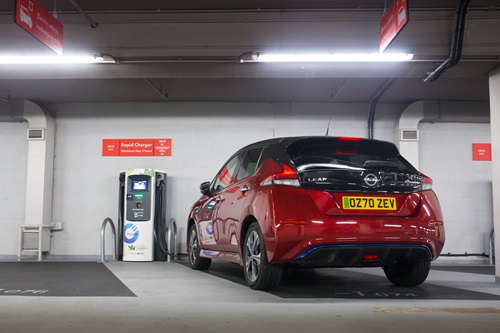With the annual Christmas getaway approaching, many drivers and families may be doing their first long run in a new electric car.
Just as with a traditional petrol or diesel car you have to prepare your vehicle and yourself for the journey.
The electric era is well and truly with us and we are likely to be getting close to a million evs on UK roads by the end of this year and users are doubtless familiar with their regular charging routine at home or workplace, but the prospect of longer journeys and mid-point recharging means you have to think further ahead.
If you don’t already use some, download a couple of ev-charging apps from the internet onto your and your partner’s phones, to help overcome possible signal issues along the way. These apps identify places where you can recharge along a selected route, but beware as hundreds of other motorists will be doing the same so you may have to queue or look for an alternative adjacent chargepoint.
Most car makers have a dedicated association with a charging company and their network can be used but they are not foolproof and like any network it can go down or be overloaded at times so you may have to extend your journey time waiting to recharge or going elsewhere.
Many travellers try to match their recharging with food and comfort breaks rather than just sit in a vehicle for an hour or so. However, service stations can become extremely busy and last year there were scenes on social media of very long, three hour queues to get boosted at some locations with limited power points.
Ideally you should not charge a car to more than 80% capacity to ensure longer life in the battery, but its perfectly ok to take the charge up to 100% occasionally.
Some drivers do not realise they can increase their car’s range using systems in the vehicle. Many EVs have ‘mode’ buttons to select eco, normal, sport or individual features to enhance economy or sporting responses, and you can depending on model, use the car’s kinetic energy to regenerate the battery when coasting or running down hill, often with a column mounted paddle to apply progressively more or less energy return to the battery under braking. Talk to your car’s dealer or look in the handbook for information on range extending features.
If you are running close to red on the battery state, try turning off the air conditioning, closing a sunroof and even the sound system output as they all contribute to the power use. Think if you need to use dipped lights or if daytime running lights are sufficient. Every bit matters until you can recharge.
Needless to say, go easy on the throttle too, avoid F1 starts from the lights and think if that overtake really is necessary.
Here are a few tips from Chris Adams, Group Operations Director at Brindley Group: “It’s a great idea to get into the habit of extending your electric vehicle’s battery life.
“Not only is it better for the vehicle, it’s great for the environment too. And there are plenty of different things you can do to increase the longevity of it.
“We might not have much in the way of hot days in this country, but it’s still best to play it safe by parking your car in the shade. Direct heat can drain the battery’s thermal management system, reducing its lifespan greatly. The same goes for cold weather too. When the temperature starts to drop, park your vehicle in a garage if it’s possible.
“In both cases, make sure it’s plugged in too – letting your charge dwindle to 0% can damage the battery. Even letting it drain to below 20% is something we’d advise against.
“If you’ve just parked up after a long journey, then it’s also best to let the battery cool down before you charge it up again. Charging the battery when it’s still hot, then it can affect it in the same way as leaving your car in high temperatures.
“You don’t have to wait long for things to cool down – half an hour or an hour is fine – but charging when the battery has cooled helps to preserve its shelf life for far longer.”
If you are going on a longer journey this holiday, try to get a good few nights sleep before, think of staggering your departure to avoid morning or evening rushhours as some people still have to work. Ensure your vehicle is fit for the road with safety and level checks done, washer bottle topped up, wipers in good state and clear out any rubbish inside or in the boot.
With petrol and diesel cars, including hybrids, check oil, water and battery and top up as necessary. Properly inflated tyres will not only save wear and fuel but also possibly your life and it might be an idea to pack some drinks and snacks in a bag in case of unexpected delays before eating breaks. By Robin Roberts Miles Better News Agency
